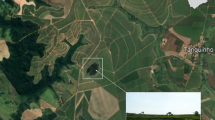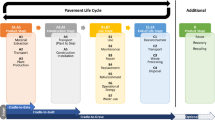Abstract
Stormwater management in cities has traditionally been based on centralized systems, evacuating runoff as quickly as possible through drainage networks that collect and convey the runoff to the final point of treatment or the receiving water body. In recent years, a different approach focused on the use of Sustainable Urban Drainage Systems (SUDS) represents a paradigm shift, promoting a decentralized management as close to the runoff source as possible. Among these techniques, permeable pavements represent an effective solution for reducing runoff and providing pollutant treatment. This contribution describes the results obtained from an innovative ceramic permeable pavement developed as part of the LIFE CERSUDS project in the city of Benicàssim (Spain). This pavement, composed by modules built from ceramic tiles in stock, allows water infiltration, runoff treatment and water reuse as part of a SUDS built in 2018 and monitored from September 2018 to September 2019. The purpose of the research was to demonstrate the hydraulic performance of the proposed solution through monitoring of runoff quantity and quality variables. Monitoring data analysis have shown positive results, reducing peak runoff rates and the volume of water which is conducted downstream. From the hydrological point of view, the system capacity shown a 100% runoff management for events up to 15–25 mm of precipitation. This is a very significant threshold since these values represent, respectively, the 81% and 91% percentiles for the study area. System performance was confirmed in terms of runoff management and water infiltration. This demonstration case study represents a reference example of urban retrofitting actions which integrate social, economic and environmental aspects.

Copyright: ITC-AICE



Copyright: Milena Villalba, for LIFE CERSUDS project






Similar content being viewed by others
Data Availability
All reports and documentation of the LIFE CERSUDS project are available on the website www.lifecersuds.eu
References
Ahiablame L, Shakya R (2016) Modeling flood reduction effects of low impact development at a watershed scale. J Environ Manag 171:81–91. https://doi.org/10.1016/j.jenvman.2016.01.036
Andrés-Doménech I, Hernández-Crespo C, Martín M, Andrés-Valeri VC (2018) Characterization of wash-off from urban impervious surfaces and SuDS design criteria for source control under semi-arid conditions. Sci Total Environ 612:1320–28. https://www.sciencedirect.com/science/article/pii/S0048969717323537 (8 Feb 2020)
Castro-Fresno D, Andrés-Valeri VC, Sañudo-Fontaneda LA, Rodriguez-Hernandez J (2013) Sustainable drainage practices in Spain, specially focused on pervious pavements. Water (Switzerland) 5(1):67–93. https://doi.org/10.3390/w5010067
CEDEX (2007) Guía técnica sobre redes de saneamiento y drenaje urbano. Manuales y. ed. centro de estudios y experimentación de obras públicas. Madrid (Spain)
Chang N-B, Lu J-W, Chui TFM, Hartshorn N (2018) Global policy analysis of low impact development for stormwater management in urban regions. Land Use Policy 70(November 2017):368–83. https://doi.org/10.1016/j.landusepol.2017.11.024
D’Arcy B, Frost A (2001) The role of best management practices in alleviating water quality problems associated with diffuse pollutio. Sci Total Environ 265(1–3):359–367
Elizondo-Martínez E-J, Andrés-Valeri VC, Jato-Espino D, Rodriguez-Hernandez J (2020) Review of porous concrete as multifunctional and sustainable pavement. J Build Eng 27:100967. https://doi.org/10.1016/j.jobe.2019.100967
Fletcher TD et al (2015) SUDS, LID, BMPs, WSUD and more – the evolution and application of terminology surrounding urban drainage. Urban Water J 12(7):525–542. https://doi.org/10.1080/1573062X.2014.916314
Gimenez-Maranges M, Breuste J, Hof A (2020) Sustainable drainage systems for transitioning to sustainable urban flood management in the European Union: a review. J Clean Prod 255:120191. https://doi.org/10.1016/j.jclepro.2020.120191
Gomez-Ullate E et al (2011) Design and construction of an experimental pervious paved parking area to harvest reusable rainwater. Water Sci Technol 64(9):1942–1950
Jato-Espino D, Charlesworth SM, Bayon JR, Warwick F (2016) Rainfall-runoff simulations to assess the potential of SuDS for mitigating flooding in highly urbanized catchments. Int J Environ Res Public Health 13(1):149. https://doi.org/10.3390/ijerph13010149
LIFE CERSUDS (2019) Layman’s Report. Castellón (Spain). LIFE15 CCA/ES/000091 /ENG. www.lifecersuds.eu
Mira J et al (2012) Prospectiva y diseño de nuevos productos basados en la reutilización y reciclaje de subproductos cerámicos. In Qualicer 12, Castellón (Spain): Cámara oficial de comercio, industria y navegación
Rahman MdA et al (2015) Recycled construction and demolition materials in permeable pavement systems: geotechnical and hydraulic characteristics. J Clean Prod 90:183–194. https://doi.org/10.1016/j.jclepro.2014.11.042
Rodríguez-Rojas MI et al (2018) A study of the application of permeable pavements as a sustainable technique for the mitigation of soil sealing in cities: a case study in the South of Spain. J Environ Manag 205:151–162
Scholz M, Grabowiecki P (2007) Review of permeable pavement systems. Build Environ 42(11):3830–3836
Scholz M, Uzomah VC, Almuktar SAAAN, Radet-Taligot J (2013) Selecting sustainable drainage structures based on ecosystem service variables estimated by different stakeholder groups. Water (Switzerland) 5(4):1741–1759
SEMCOG (2008) Low impact development manual for Michigan. Detroit. http://semcog.org/plans-for-the-region/environment/green-infrastructure. Accessed 10.01.2020
TRCA and CVC (2010) Low impact development stormwater management planning and design guide. Version 1.0. Ontario. https://cvc.ca/wp-content/uploads/2014/04/LID-SWM-Guide-v1.0_2010_1_no-appendices.pdf. Accessed 10.01.2020
UNISDR (2015) The human cost of weather-related disasters: 1995–2015. www.unisdr.otg
Wang Mo et al (2018) Assessing hydrological effects and performance of low impact development practices based on future scenarios modeling. J Clean Prod 179:12–23. https://doi.org/10.1016/j.jclepro.2018.01.096
Woods Ballard B, Wilson S, Udale-Clarke H, Illman S, Scott T, Ashley R, Kellagher R (2015) The SUDS manual. CIRIA C753, London
Zhou Q (2014) A review of sustainable urban drainage systems considering the climate change and urbanization impacts. Water (Switzerland) 6(4):976–992
Zubelzu S et al (2019) Design of water reuse storage facilities in sustainable urban drainage systems from a volumetric water balance perspective. Sci Total Environ 663:133–143. https://doi.org/10.1016/j.scitotenv.2019.01.342
Acknowledgments
This research was developed within the LIFE CERSUDS project and was financed by the LIFE Programme 2014-2020 of the European Union for the Environment and Climate Action [Reference LIFE15 CCA/ES/000091] with the collaboration of the Generalitat Valenciana through IVACE.
Funding
This research was developed within the LIFE CERSUDS project and was financed by the LIFE Programme 2014–2020 of the European Union for the Environment and Climate Action [Reference LIFE15 CCA/ES/000091] with the collaboration of the Generalitat Valenciana through IVACE.
Author information
Authors and Affiliations
Contributions
J.T. Castillo-Rodríguez is the main author, researcher of the LIFE CERSUDS project in the period Jan 2017- Sep 2019, collaborated in the design of the solution, conducting monitoring actions and analysis of results; thus, she was responsible for drafting the manuscript, and define its conception, design and content. I. Andrés-Doménech coordinated the UPV team as part of the LIFE CERSUDS project, and contributed to define the manuscript scope, review of the state-of-the-art and analysis and interpretation of results, and manuscript revision. M. Martín has contributed regarding water quality analysis and interpretation of data; I. Escuder-Bueno and S. Perales-Momparler contributed to review results regarding hydraulic performance of the solution; and J. Mira-Peidro, LIFE CERSUDS coordinator, has contributed in all aspects regarding the use of ceramic material and performance analysis of the final configuration of the proposed permeable pavement.
Corresponding author
Ethics declarations
Ethical Approval
Not applicable.
Consent to Publish
Not applicable.
Consent to Participate
Not applicable.
Competing Interests
Not applicable.
Additional information
Publisher’s Note
Springer Nature remains neutral with regard to jurisdictional claims in published maps and institutional affiliations.
Highlights
• An innovative SUDS solution for permeable pavements is described and analysed.
• The use of a ceramic permeable pavement has demonstrated the benefits of reducing impervious urban surfaces to control urban runoff at source.
• Recommendations for monitoring this type of SUDS techniques are provided.
Rights and permissions
About this article
Cite this article
Castillo-Rodríguez, J.T., Andrés-Doménech, I., Martín, M. et al. Quantifying the Impact on Stormwater Management of an Innovative Ceramic Permeable Pavement Solution. Water Resour Manage 35, 1251–1271 (2021). https://doi.org/10.1007/s11269-021-02778-7
Received:
Accepted:
Published:
Issue Date:
DOI: https://doi.org/10.1007/s11269-021-02778-7




